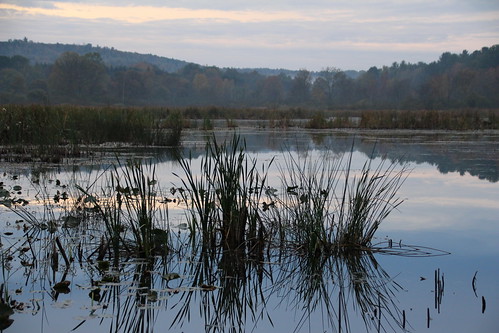By Mac Dawson, Nature Educator
It’s about now we have a firm grip on the scope of our New Year’s resolutions. We did the easy part of planning and inspiring ourselves, and by now we’re starting to understand what committing to our goals really means and how it might impact our routines. We are reflecting on who we are and who we want to become. For many, this means crafting resolutions – promises we make to ourselves in pursuit of growth, transformation, or repair. Resolutions hold power because they are declarations of intent, tethering our present selves to the future we envision. Yet, there is an often-unspoken promise woven into our lives that pre-dates any New Year’s list: Our commitment to the planet that sustains us. As we resolve to exercise more, spend less, or learn something new, it’s worth considering how we can expand our personal promises to include collective action for a cleaner, healthier environment.
At the heart of any resolution lies the belief that change is possible. This belief is supported by the same foundational principle that drives science – the pursuit of truth through observation, inquiry, and evidence. Science is not static; it evolves as we ask better questions and refine our understanding of the natural world. In the same way, our resolutions must adapt as we learn more about the impact of our choices. To commit to a cleaner environment is to engage in an ongoing process of discovery, much like the scientific method itself.
The science of climate change, for example, is built on decades of meticulous observation, experimentation, and analysis. Each new study reinforces or reshapes our understanding of the intricate web of relationships that govern our planet’s ecosystems. Human activity is altering the Earth’s systems in profound ways. Rising temperatures, melting glaciers, and increasing biodiversity loss are not merely headlines; they are truths revealed by science. To ignore these truths is to break a promise—not just to the planet, but to future generations who will inherit the consequences of our inaction.
But resolutions are not only about acknowledging the truth; they are about acting on it. Promising to live more sustainably is an act of humility, a recognition that we are not separate from nature but deeply entwined with it. This mindset shift mirrors the ethos of science, which teaches us that every answer leads to new questions. How can we reduce waste in our households? How can we support renewable energy initiatives in our communities? How can we amplify the voices of those most affected by environmental degradation?

In seeking answers, we become participants in a larger narrative of stewardship. Every decision, no matter how small, contributes to the larger goal. Choosing reusable bags over single-use plastics may seem inconsequential in isolation, but when multiplied by millions of individuals making similar choices, the impact is transformative. This is the essence of a resolution—incremental changes that, over time, yield profound results.
Yet, the pursuit of a cleaner environment is not without challenges. Like any resolution, it requires discipline, patience, and resilience. It is easier to maintain old habits than to adopt new ones, especially when the immediate benefits are not always visible. Recycling one bottle might feel insignificant in the face of global deforestation, just as one workout can feel futile in the face of a long-standing health goal. But the science is clear; collective action matters. The weight of many small decisions can tip the scales, just as a single data point contributes to the broader picture of truth.
Furthermore, our promises to the planet can serve as a bridge between science and empathy. Environmental issues are often framed in abstract terms—carbon footprints, methane emissions, deforestation rates—but behind every data point are stories of real people and ecosystems. Communities displaced by rising sea levels, farmers struggling with drought, and species losing their habitats are not distant realities; they are integral to the tapestry of life on Earth today. By committing to a cleaner environment, we are not only honoring the truth revealed by science but also the interconnectedness of all living beings.

We must be aware that our resolutions must be grounded in the recognition that our actions ripple outward. The pursuit of a cleaner environment is not a solitary endeavor; it is a promise we make to one another, to the Earth, and to the generations yet to come. Science provides us with the tools to measure our progress and the knowledge to refine our strategies. It reminds us that truth is not a destination but a journey, one that requires curiosity, courage, and commitment.
In this new year, let us resolve to embrace the truths that science reveals and to act on the promises we make—not out of obligation, but out of love. Let us remember that resolutions, like science, are not about perfection but about progress. With each step, no matter how small, we move closer to a cleaner, healthier, and more just planet. This is our collective promise, and it begins with the simple yet profound act of choosing to care.
Audubon Community Nature Center builds and nurtures connections between people and nature. ACNC is located just east of Route 62 between Warren and Jamestown. The trails are open from dawn to dusk and birds of prey can be viewed anytime the trails are open. The Nature Center is open from 10 a.m. until 4:30 p.m. daily except Sunday when it opens at 1:00 p.m. More information can be found online at auduboncnc.org or by calling (716) 569-2345.


Recent Comments